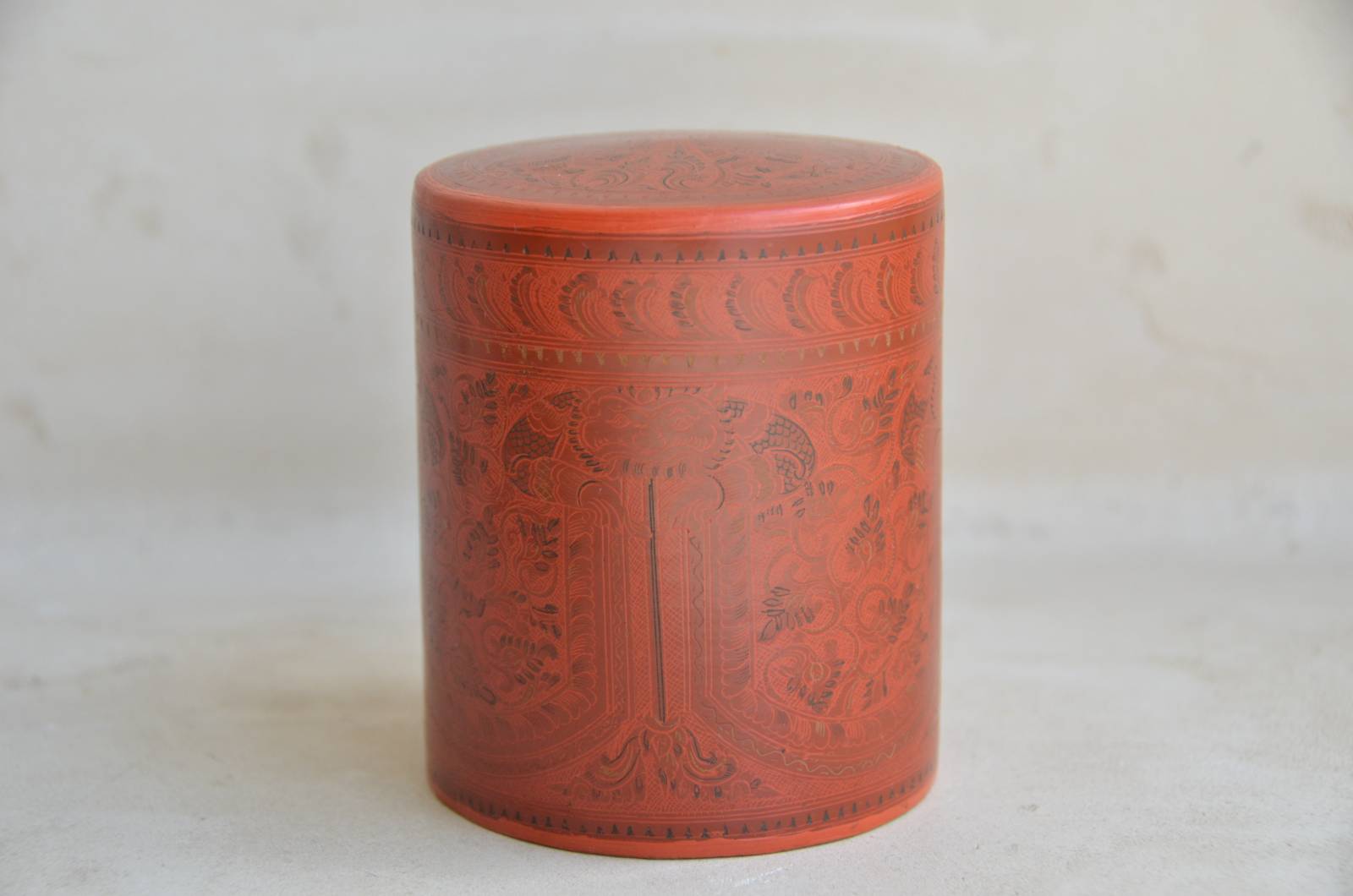Myanmar
by Kenta Takeshige
In Myanmar, lacquer is called Thit Si.
It is not certain when lacquer art was performed at first. There are different theories stating that it was either imported from China or that engineers were invited from neighboring Thailand.
Bagan
From the 1050s to 1287, the Pagan Kingdom prospered in Pagan (present-day Bagan). The ancient city of Bagan is still the center of Myanmar lacquer art. Bamboo is mainly used as the base material. The horsehair substrate, which is made by weaving the hair of the horse's tail into the bamboo, is a unique base material in Bagan. The lacquer art education institution in Bagan was established in 1924 as a governmental lacquerware training center. The school was upgraded over time to Bagan Lacquerware Institute first and has become the Lacquerware Technology College of Bagan, Myanmar today.

Burmese lacquer techniques
The gold leaf technique of Myanmar is called "Shwei Zawa". This gold leaf technique lets the decoration emerge by rinsing with water. For starters, a decorative motif is drawn on a black lacquer surface. Next, water-soluble glue is applied to this black background. Then, the entire surface is covered with a thin layer of lacquer. This layer is wiped off and the gold leaf is pressed on top of it. Later on, by rinsing with a large amount of water the glue will loosen. Thus the gold leaf in the background will come off while the decorative motif in gold leaf remains. It is similar to Thailand’s gold leaf technique Lai Rot Nam.
Another Myanmar lacquer technique "Kanyit", similar to Japanese Kinma technique, uses Acacia sap to mask the lacquer surface. Patterns are carved with a blade, and colored lacquer is applied into the incisions. After the lacquer has hardened, the colored lacquer - other than that in the carved parts - is washed away due to the Acacia sap masking. This process is repeated, always in the same order: vermilion first, next green and finally yellow colored lacquer.

The name Kinma in Japanese is a little confusing: first of all, Kinma refers to Betel, a plant of the Piperaceae family. But Kinma also refers to a luxury product for chewing on, made by slicing and drying Areca nut (Palm nut) and Betel leaves coated with water-dissolved lime. On top of all that, the lacquerware for storing this luxury product is also called Kinma as does the technique to produce this lacquerware.
Another Myanmar technique is to mix cow dung and/or ash with lacquer to make it thick and clayey, and attach it to the lacquer surface to create a relief. Gold leaf is applied to finish this relief. This technique to liven up the foundation is called "Thayoe".
